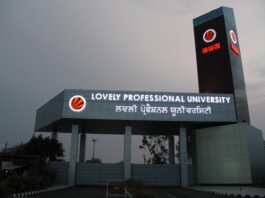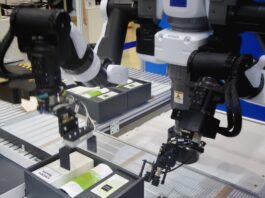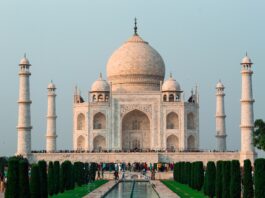First, we need to understand why the poor of developing countries such as India and Ethiopia are not able to uplift themselves naturally from the grips of poverty. And then we will move on to a revolutionary initiative that is being undertaken by Ethiopia which combines microfinance with blockchain to uplift its citizens from poverty.
Did you know that banking for the poor is one of the biggest and the most neglected obstacles in developing India? While, on one side, we have in India that is the pinnacle of the fintech revolution. The other, India is neglected to such a large extent that about 20% of the Indian population does not even have a bank account. Now, on the outside, for most of us, having a bank account or getting a credit card might not sound like a big deal.
But one thing that you must know is! Credit is one of the miracles of economics. That is so powerful that when done right, it can double the income of the poorest in the country. And as of today, it is being underutilized to such an extent that we might be bleeding billions of dollars in terms of the GDP of our country. So the question is, what is so special about credit and how can it double the income of the poorest in India? And most importantly, how can we build the next generation of banking systems to uplift the poor of our country?
The first thing that we need to understand is that as we go down the economic strata, it is comparatively easier both in terms of time and money, to increase your primary source of income. For example, let’s take the case of Sita. Sita is a 19-year-old girl who studied up to twelve standards in a government school. Her father is a factory worker and her mother works as a maid. Her total family income is about Rs 20000 per month with a savings of about Rs 500. And that too if there is a small festival or a function the savings are close to nothing, and since her family might need savings any time, they do not use a bank account and keep only cash.
And Sita herself makes about Rs 8000 a month. Now, to double her income, all she needs to do is learn English and take up soft skill training to get a job in a call centre or work at a store like Dominoes. And here’s where she can comfortably make about Rs 15000 a month. But in order to learn English, she has to invest Rs 3000 to Rs 5000 into a great course, training and books. Now, considering her meager family savings, we all know that it’s practically impossible that her family will agree to put in one year of savings into doing a course. So the only way left is to go to a moneylender who’s going to charge it up to 85% in interest. Making it all the more impossible. And getting a loan is very, very difficult because Sita does not have a salary slip. She does not have a credit history, and most importantly, her bank account itself has been inactive for years. Therefore, Sita cannot pursue an English course and hence lack of Rs 5000 credit would cost her an opportunity that can uplift her entire family within just 90 days.
Similarly, Mrs Shita is a single mother who works as a factory worker with a salary of about Rs 20000 per month. She has sold all of her assets and put in all of her savings to make her son study in an engineering College. And she encountered a situation wherein during the placement season, that is, in the fourth year, the College decides to hike up the field by Rs 15000. And this puts Mrs Sheetal in trouble. Now, Mrs Sheeter will have no other option but to beg from relatives, go to a moneylender, or worst case, her son will have to drop out for a year. And as you all know, dropouts in India do not get a job easily. Therefore, because of just Rs 15000, her son will be refrained from applying for a job that would have given him an annual income of about three to five lakh rupees.
This is how crucial credit is at the bottom of the pyramid. And the stories that I told you are not just two individual stories, but a representation of millions of poor people in our country. And these are the people who do not have access to financial services as easily as we do. And this concept of providing financial services to lower-income people is what we call microfinance.
But you know what? As of today, the banking system in many ways has not been able to develop a system that can make these financial services easily accessible to the poor. And there are three valid reasons for that. Number one, providing microloans is not seen as a profitable or a wide-able venture by the banks. Number two is a lack of digital identities. And that is, most people do not have valid IDs or addresses and hence cannot be trusted. And last and most importantly, there is currently no way to determine if a person who’s taking a loan is or will be capable of paying back the loan or not. Why? Because when it comes to a person like a housemaid, they do not have a credit or a transaction history, because they neither have a credit card nor do they use their bank account frequently. So, it is almost impossible to determine the creditworthiness of an individual, and therefore they cannot be given a loan easily. Today there are a few PSU and charitable trusts that calculate this creditworthiness by manually doing a background check of every individual through investigation and multiple pieces of research. But even then, this is neither scalable nor a reliable model. So, if you see, the particular problem that we have over here is that the people who need microloans do not have a credit or transaction history, and the people who have a credit or transaction history that’s people like us, we don’t need microloans as much as Rs 5000.
So, the question is, how do we build a banking system that can issue microloans to people without a conventional credit history. And most importantly, how do we determine the creditworthiness of such individuals?
These are the questions the answer to which can uplift the poor of the developing countries such as India or Ethiopia. We shall be discussing the promising solution implemented by Ethiopia which combines microfinance with blockchain to tackle in part 2 of this article.




